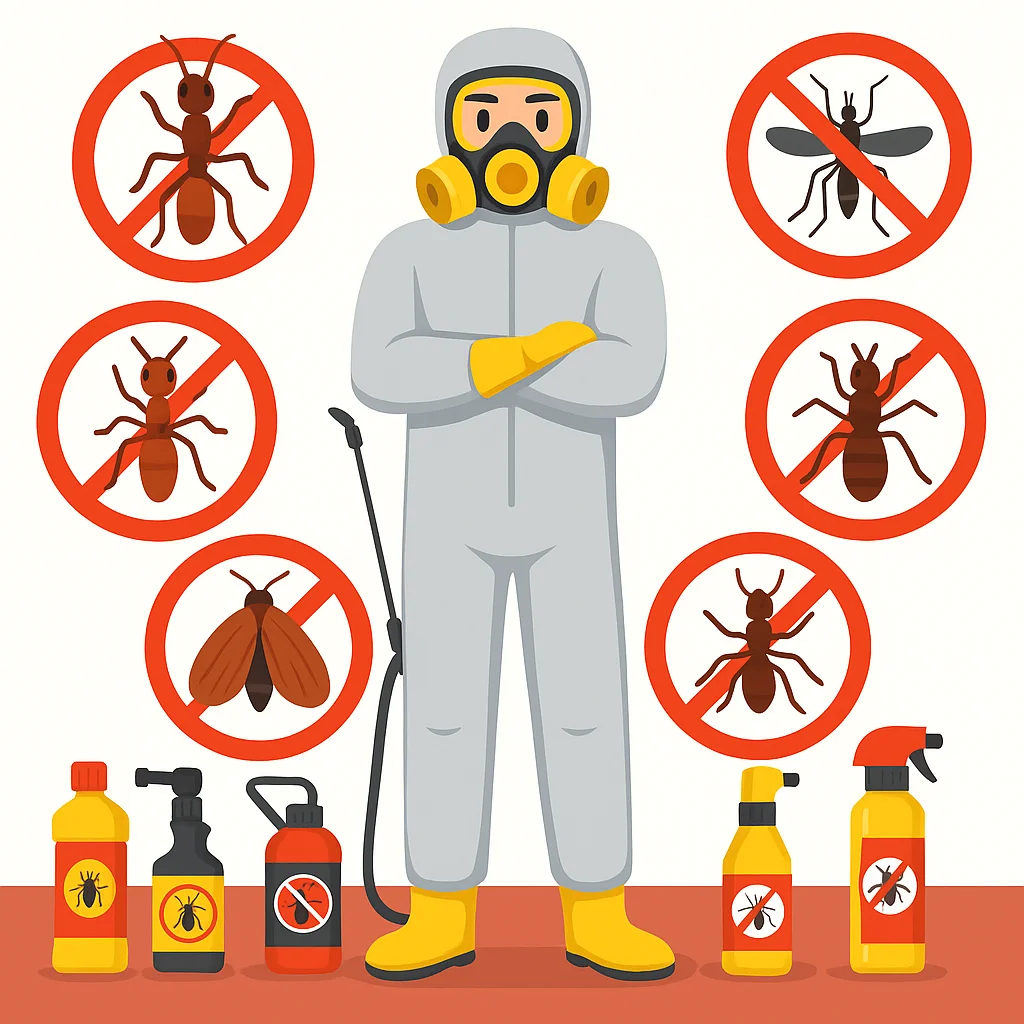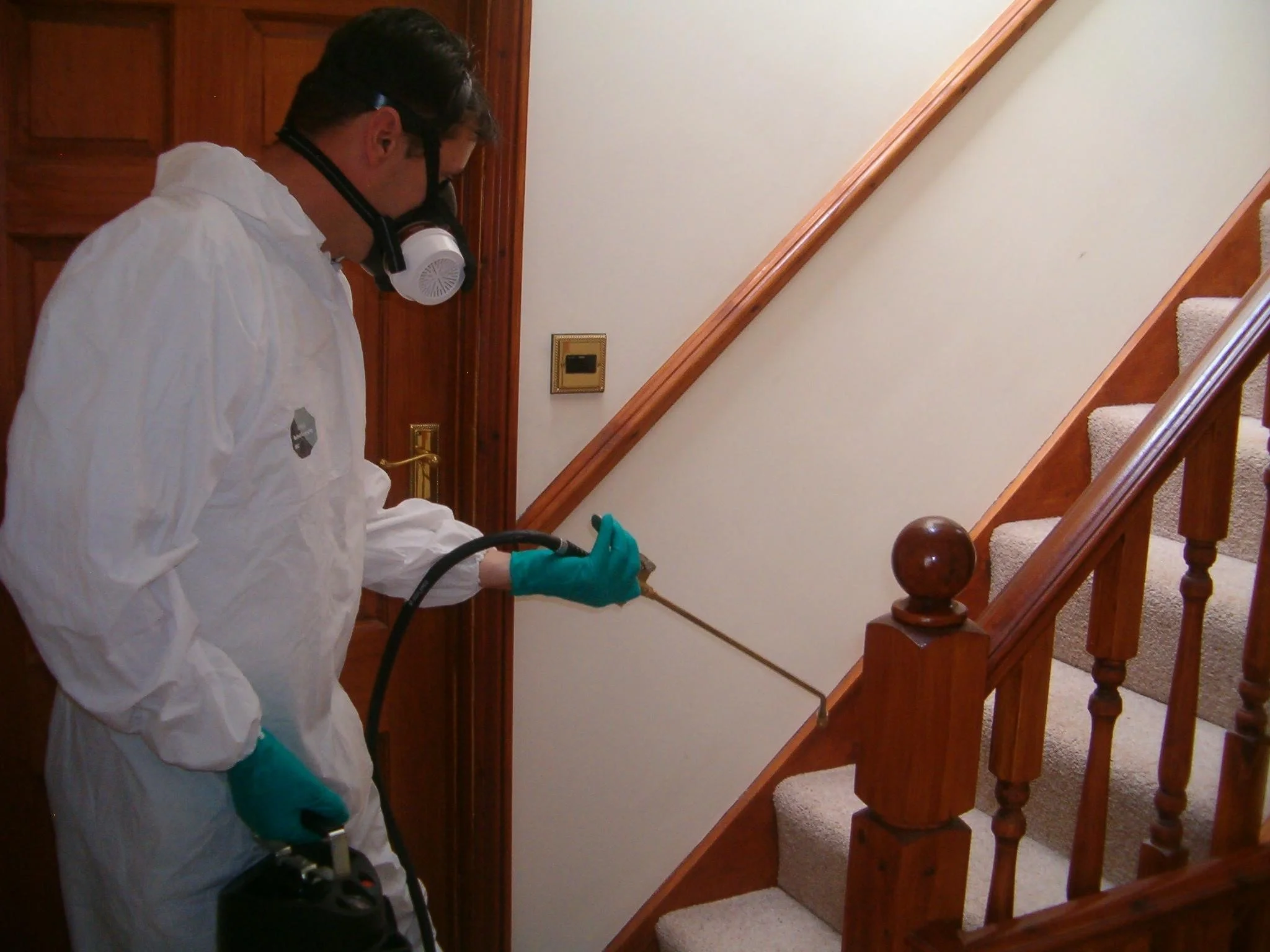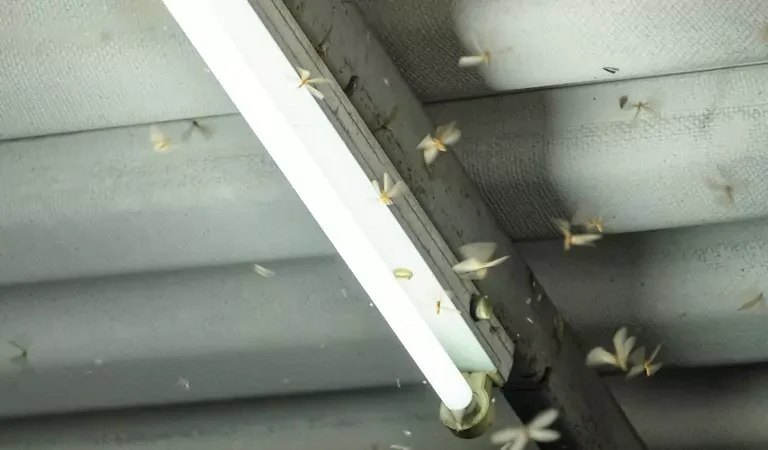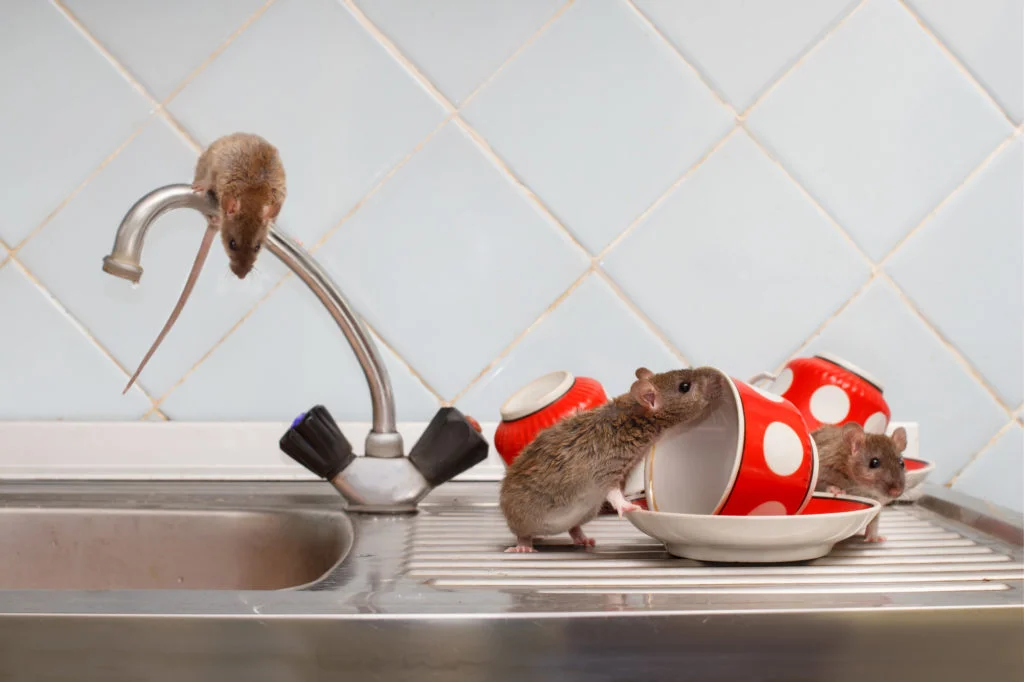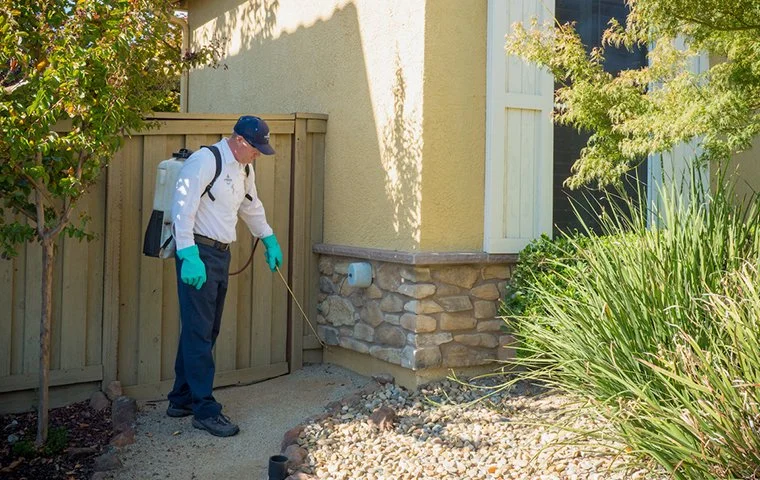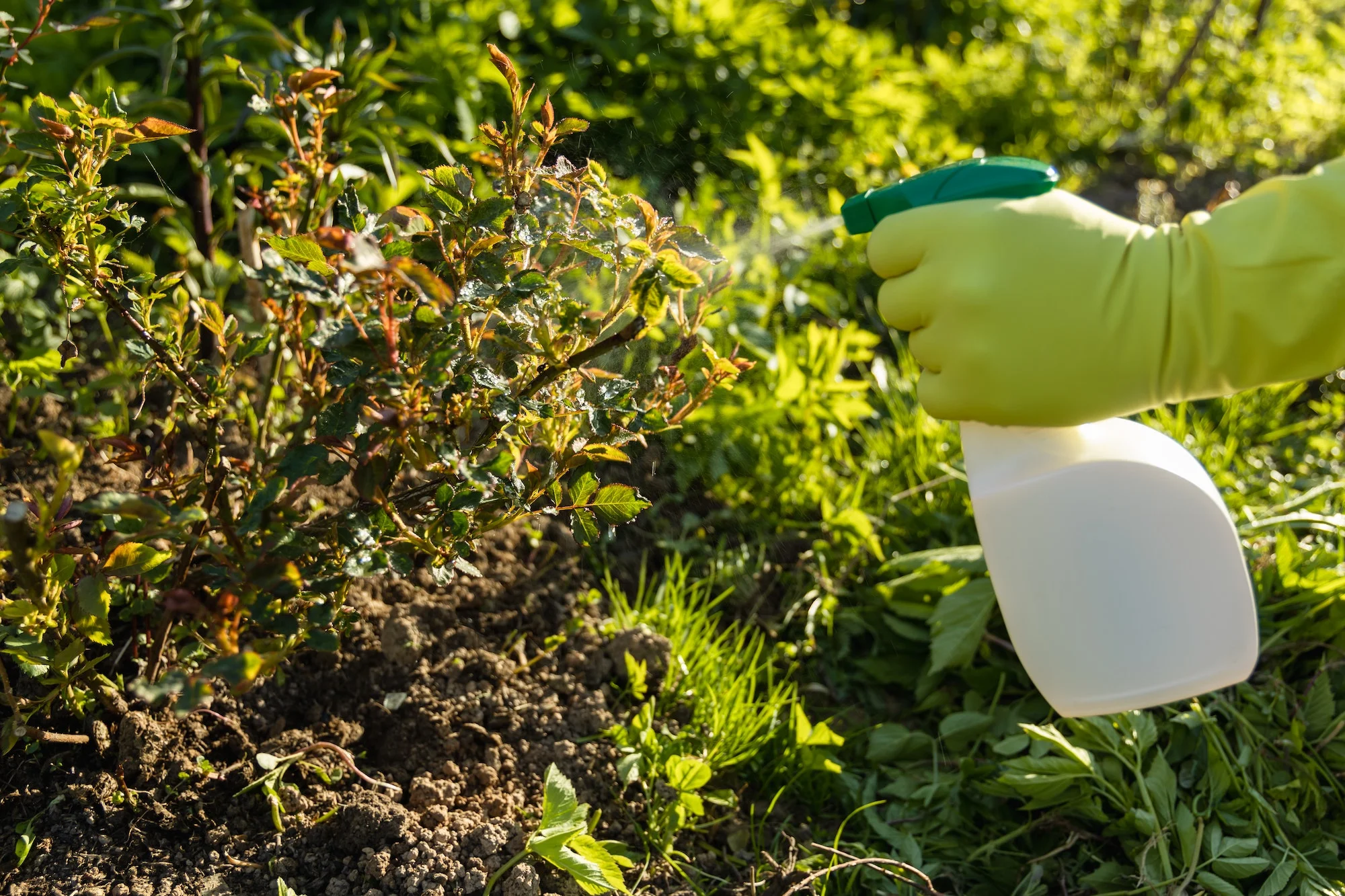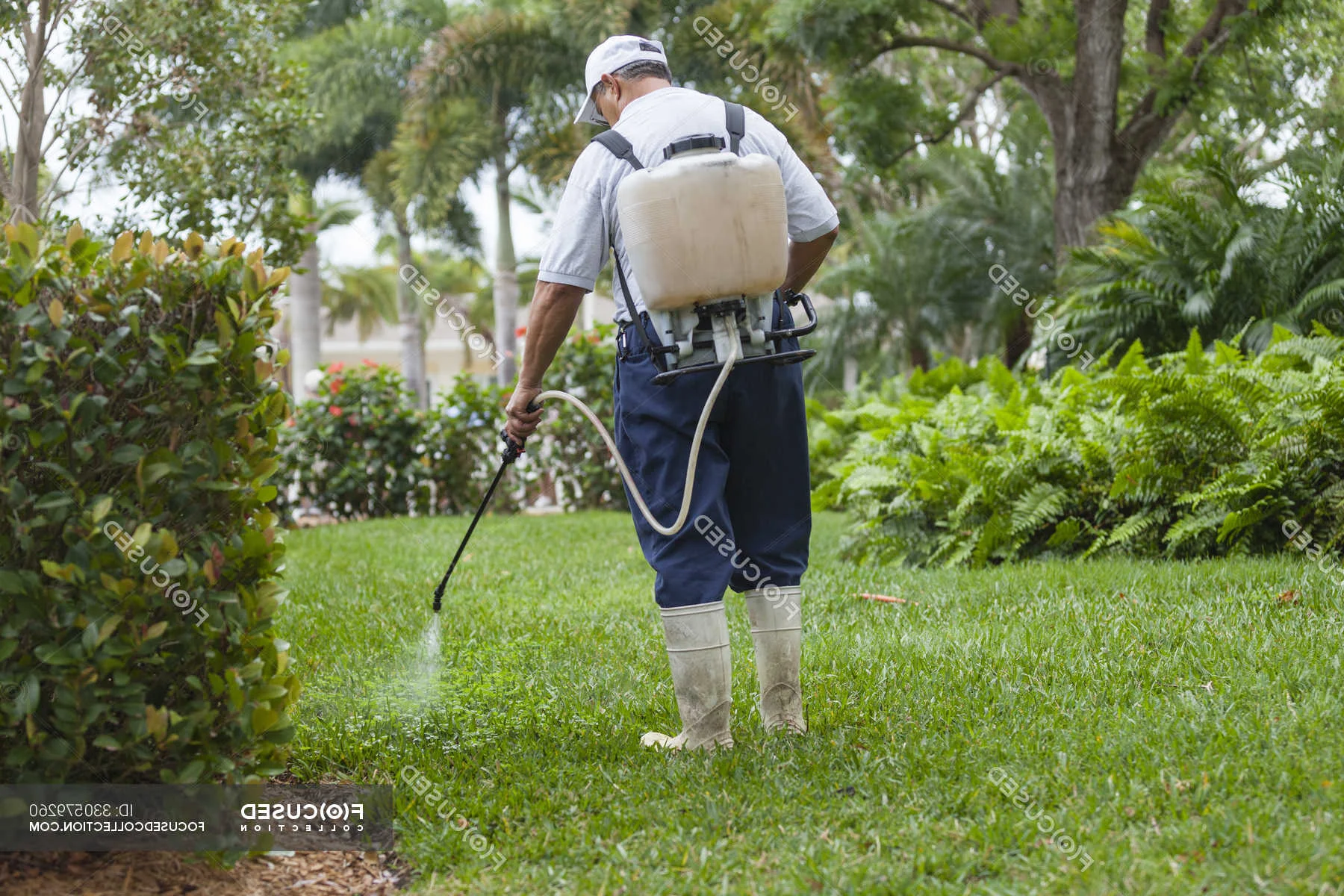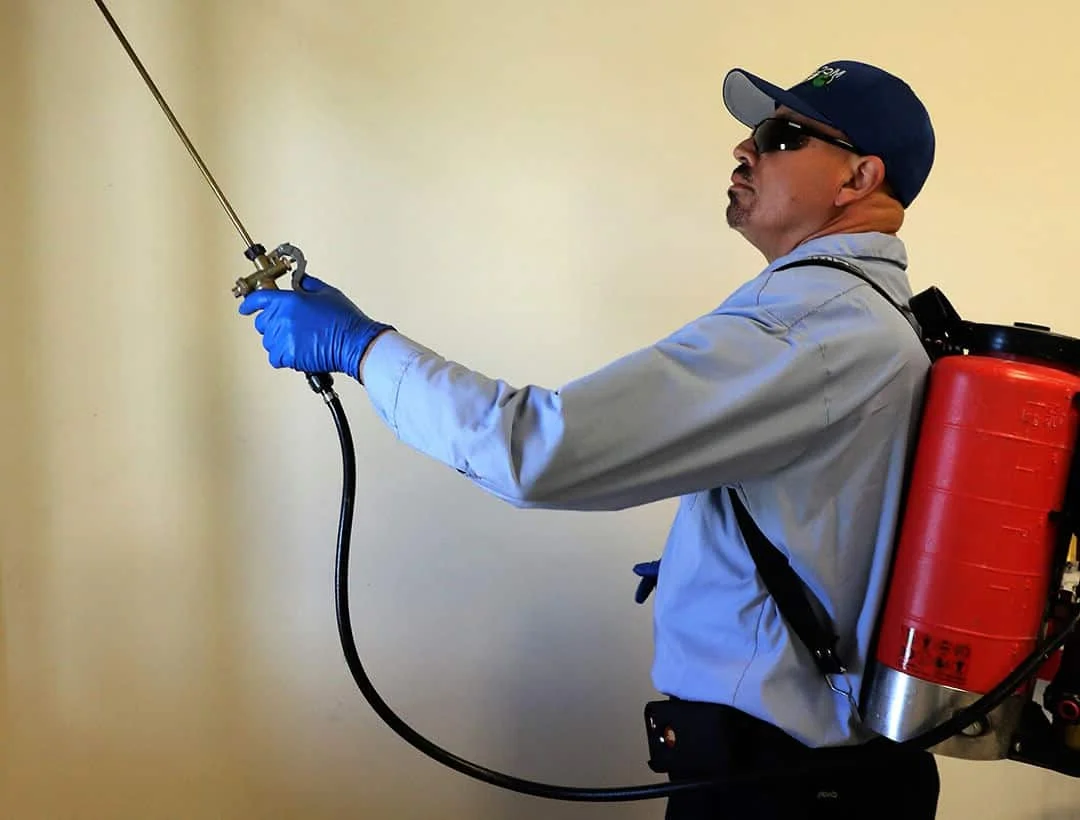New subdivisions represent fresh opportunities for pest-free living, but they
also face unique challenges that require specialized pest management approaches.
Construction activities, landscape establishment, and the transition from natural
habitats to residential areas create temporary pest pressures that can become
permanent problems without proper planning. Effective new subdivision pest control
begins before the first foundation is poured and continues through construction,
landscaping, and the critical first years of occupancy.
From pre-construction soil treatments to coordinated move-in protection programs,
subdivision pest management requires understanding how development activities
affect local pest populations and implementing preventive strategies that protect
new homeowners from day one. Professional construction phase pest control
addresses the disruption of existing pest habitats while establishing long-term
prevention protocols that ensure new communities start with comprehensive protection
rather than reactive treatment programs.
Starting a new development? Our specialized team offers
pre-construction pest planning
PROACTIVE and comprehensive
subdivision protection programs that prevent problems before they start.
Plan your subdivision's pest strategy today!
Pest Control Challenges During Subdivision Development
New subdivisions face distinct pest management challenges that evolve throughout
the development process. Understanding these phase-specific challenges allows
developers and homeowners to implement proactive pest prevention strategies
rather than reactive treatments:
-
Habitat disruption and displacement Construction activities disrupt
existing pest habitats, forcing wildlife and insects to relocate. Without
proper planning, displaced pests often establish new territories within
the developing subdivision, creating immediate problems for new residents.
-
Construction material attraction Building materials, temporary structures,
and construction debris can attract termites, carpenter ants, and rodents.
Lumber piles, foundation forms, and staging areas become temporary harborage
sites that can lead to permanent infestations if not properly managed.
-
Soil disturbance and termite exposure Excavation and grading activities
expose existing termite colonies and create conditions that favor new colony
establishment. Disturbed soil around foundations provides ideal conditions
for subterranean termite activity.
-
Landscape establishment vulnerabilities New landscaping requires
intensive irrigation that creates moisture conditions attractive to various
pests. Young plants and fresh mulch provide food and harborage for insects
while irrigation systems can leak, creating ongoing moisture issues.
-
Utility installation pest pathways Underground utilities, cable runs,
and drainage systems create potential pest highways between properties.
Gaps around utility penetrations provide entry points that can remain
problematic long after construction is complete.
Professional construction phase pest control addresses these challenges
through coordinated strategies that begin with site planning and continue
through final landscaping. This comprehensive approach prevents pest
establishment during vulnerable development phases when intervention is
most effective and cost-efficient.
Phase-by-Phase Pest Management Strategy
Effective subdivision pest control requires different strategies during each
phase of development. Our comprehensive approach addresses pest risks and
opportunities throughout the entire development timeline:
Pre-Construction Planning
Strategic planning ensures pest prevention is built into subdivision development
Pre-construction pest assessment identifies existing pest populations,
evaluates site conditions that could support pest activity, and develops
prevention strategies that can be incorporated into construction planning.
This phase includes soil testing for termite activity, habitat evaluation
for rodents and wildlife, and identification of water sources that could
support mosquito breeding.
Site planning recommendations address drainage design, utility placement,
and landscape planning that minimizes future pest attraction. Early
coordination with builders and landscape architects ensures that pest
prevention is integrated into design decisions rather than added as
an afterthought during construction.
Site Preparation and Grading
Professional soil treatments during site preparation prevent future termite issues
Site preparation activities provide opportunities for comprehensive
soil treatment programs that prevent termite establishment
before construction begins. Pre-construction termite treatments are
more effective and cost-efficient than post-construction applications
because they can be applied to entire areas without working around
existing structures.
Grading and drainage work should incorporate pest prevention features
like proper slope away from building sites, elimination of standing
water areas, and establishment of vegetation-free zones around future
foundations. These early interventions prevent pest-attractive
conditions from becoming permanent features of the subdivision.
Construction Phase Management
Active construction creates temporary pest attraction and harborage opportunities
that require ongoing management. Construction site pest control includes
regular monitoring of material storage areas, elimination of standing water
from construction activities, and protection of building materials from
pest infestation.
Foundation treatments, utility penetration sealing, and construction debris
management prevent pest establishment during the building phase. Coordination
with construction schedules ensures that pest control activities don't
interfere with building progress while providing maximum protection for
developing structures.
Landscaping and Final Development
Landscape installation requires careful pest management because new irrigation
systems, fresh plantings, and mulched areas can attract various pests.
Landscape establishment pest control includes monitoring irrigation
for leaks, proper mulch application techniques, and plant selection that
minimizes pest attraction.
Final grading, seed establishment, and hardscape installation should incorporate
pest prevention features like proper drainage, elimination of pest harborage
areas, and maintenance access that supports ongoing pest management activities.
This phase establishes the foundation for long-term community pest prevention.
Common Pests in New Subdivisions
New subdivisions face specific pest challenges that differ from established
neighborhoods. Understanding these common threats helps developers and new
homeowners implement appropriate prevention and treatment strategies:
Termites
Early termite prevention protects new subdivision homes from costly damage
Termites represent the most significant long-term threat to new subdivisions,
particularly because soil disturbance during construction can expose existing
colonies or create conditions favorable to new colony establishment.
Pre-construction termite prevention through soil treatments provides
the most effective and economical protection available.
New construction attracts termites through fresh wood materials,
construction debris, and irrigation systems that provide the moisture
termites need to thrive. Comprehensive termite prevention programs
address both subterranean and dry-wood termite threats through soil
treatments, construction monitoring, and ongoing inspection protocols.
Displaced Wildlife and Rodents
Managing displaced rodent populations during new subdivision development
Construction activities displace existing rodent populations, forcing
them to seek new territories within the developing subdivision. Mice,
rats, and other small mammals may establish territories in construction
areas, storage sites, and newly completed homes before residents move in.
Wildlife displacement management addresses these issues through
habitat modification and strategic exclusion work.
New homes with incomplete landscaping and settling foundations may
provide easy entry points for displaced rodents. Proactive exclusion
work during construction and immediate post-construction periods prevents
rodent establishment before problems become entrenched and difficult
to eliminate.
Mosquitoes from Construction Activities
Construction activities often create temporary water collection areas that
become mosquito breeding sites. Excavations, tire ruts, material storage
areas, and irrigation system testing can all provide standing water that
supports mosquito reproduction. These temporary breeding sites can create
significant mosquito pressure before landscapes are established.
Construction site mosquito management requires ongoing monitoring
and elimination of breeding sites throughout the development process.
Early establishment of drainage protocols and water management practices
prevents mosquito problems from becoming established during the vulnerable
construction period.
Landscape-Related Pests
New landscaping attracts various pests through intensive irrigation,
fresh plant materials, and mulching activities. Ants, aphids, scale insects,
and other pests may quickly colonize new plantings, while irrigation
systems can attract termites and create moisture conditions that support
various pest populations.
Young plants are often more susceptible to pest damage than established
vegetation, making early pest management crucial for landscape establishment
success. Integrated pest management during landscape installation helps
establish healthy plant communities that are more resistant to future
pest problems.
Flying Insects Attracted to New Lighting
New subdivision lighting can attract large numbers of flying insects from
surrounding natural areas, creating nuisance problems for new residents.
Outdoor lighting around homes, streets, and common areas draws moths,
beetles, and other flying insects that can become problematic without
proper management.
Strategic lighting design and management can minimize flying insect attraction
while maintaining security and aesthetic goals. Coordination between lighting
installation and pest management planning helps prevent problems before
they develop.
Benefits for Developers and Builders
Professional subdivision pest management provides significant
value for developers and builders through risk mitigation, enhanced
marketability, and long-term community success. Proactive pest
prevention demonstrates quality construction practices and provides
competitive advantages in today's demanding housing market.
Early pest prevention reduces warranty claims, enhances buyer satisfaction,
and supports premium pricing for new homes. Developers who invest in
comprehensive pest management often see improved sales velocity and
higher customer satisfaction scores compared to communities without
proactive pest prevention programs.
-
Reduced warranty claims and callbacks Proactive pest prevention
eliminates many common post-construction pest problems that generate
expensive warranty work and customer service issues. Prevention costs
significantly less than reactive treatments and property remediation.
-
Enhanced marketability and differentiation Comprehensive pest
management programs provide marketing advantages that help differentiate
developments from competitors. Buyers increasingly value pest-free
communities and environmental sustainability in home purchasing decisions.
-
Improved customer satisfaction and referrals New homeowners who
don't experience pest problems are more likely to recommend the builder
and development to friends and family. Positive customer experiences
support ongoing sales and builder reputation.
-
Regulatory compliance and risk management Professional pest
management helps ensure compliance with local building codes, environmental
regulations, and health requirements that may affect development approval
and ongoing operations.
-
Long-term community value preservation Effective pest prevention
supports property value retention and community desirability over time.
Well-maintained pest management contributes to stable and appreciating
property values for all residents.
Planning your next subdivision? Our specialized development pest control programs
provide the comprehensive protection and professional coordination that enhances
project success. From pre-construction planning to move-in protection –
partner with us for superior results!
New Homeowner Protection Programs
Move-In Protection Services
Comprehensive move-in protection ensures new homeowners start pest-free
Move-in pest protection provides new homeowners with immediate
comprehensive coverage that addresses any pest issues that may have
developed during the final construction phases. These services include
thorough inspections, preventive treatments, and establishment of
ongoing monitoring protocols that support long-term pest prevention.
Move-in services are particularly valuable because they address the
transition from construction environment to residential occupancy.
This critical period requires specialized attention to ensure that
temporary construction-related pest attractions don't become permanent
problems for new residents.
First-Year Warranty Programs
New subdivision homes benefit from first-year pest protection warranties
that provide peace of mind during the critical establishment period. These
programs address any pest issues that may develop as landscapes mature,
foundations settle, and homes transition from new construction to established
residences.
First-year programs typically include quarterly inspections, preventive
treatments as needed, and immediate response to any pest concerns that
develop. This comprehensive approach ensures that minor issues are addressed
quickly before they become major problems requiring extensive treatment.
Landscape Establishment Support
New landscaping requires specialized pest management during the establishment
period when plants are most vulnerable and irrigation systems are being
fine-tuned. Landscape establishment pest control protects new plantings
while ensuring that irrigation and mulching practices don't create conditions
that attract unwanted pests.
Support services include monitoring for plant-damaging insects, managing
moisture-related pest attractions, and establishing integrated pest
management practices that support healthy landscape development. This
foundation ensures that landscapes mature into pest-resistant environments
rather than pest-attractive liabilities.
Environmental and Sustainability Considerations
Modern subdivision development increasingly emphasizes environmental
sustainability and ecological responsibility. Sustainable pest management
approaches support these goals while providing effective pest control
through integrated strategies that minimize environmental impact and
preserve beneficial species.
Green building practices and LEED certification requirements often
include pest management considerations that affect product selection,
application methods, and long-term maintenance strategies. Professional
providers help developers meet sustainability goals while maintaining
effective pest protection for new communities.
| Sustainable Practice |
Development Benefits |
Implementation Strategy |
| Habitat Preservation |
Maintains beneficial species; reduces pest displacement;
supports ecological balance and environmental certifications.
|
Strategic land planning; buffer zones; native plant selection;
wildlife corridor preservation where appropriate.
|
| Integrated Design Approaches |
Reduces long-term pest pressure; minimizes treatment needs;
supports sustainable community development goals.
|
Pest-resistant design features; natural drainage systems;
strategic landscape planning; building orientation considerations.
|
| Low-Impact Treatment Methods |
Meets green building requirements; protects water quality;
safe for families and pets from move-in day.
|
Targeted applications; biological controls; physical barriers;
monitoring-based decision making; minimal-risk products.
|
| Water Quality Protection |
Meets environmental regulations; protects community water sources;
supports sustainable development certifications.
|
Precision application techniques; buffer zones near water features;
integrated stormwater management; erosion control coordination.
|
Sustainability Partnership
Our new subdivision pest management programs support LEED certification,
green building standards, and environmental stewardship goals while
delivering superior pest protection for developing communities.
Advanced Technology for New Subdivisions
Modern subdivision development benefits from advanced pest management
technologies that provide better monitoring, treatment efficiency, and
long-term management capabilities. Technology integration during development
phases establishes sophisticated pest management infrastructure that
supports ongoing community protection.
Smart Monitoring Systems
Advanced monitoring systems provide early detection and prevention capabilities
Smart monitoring technology can be integrated during construction
to provide continuous surveillance for pest activity throughout common
areas and key monitoring points. These systems detect pest presence
before infestations develop, enabling rapid response that prevents
problems from spreading throughout the community.
Automated monitoring reduces the need for frequent inspections while
providing more comprehensive coverage than traditional methods. Real-time
alerts enable immediate response to emerging pest issues, supporting
proactive management that maintains pest-free conditions more effectively
than reactive approaches.
Digital Documentation and Reporting
Comprehensive digital documentation systems track all pest management
activities from pre-construction through ongoing maintenance. Digital
pest management records support warranty programs, provide valuable
data for ongoing management decisions, and ensure compliance with
regulatory requirements.
Digital platforms enable real-time communication between pest management
providers, developers, builders, and new homeowners. This transparency
supports informed decision-making and ensures that all stakeholders
understand pest management activities and their benefits.
Predictive Analytics
Advanced data analysis helps predict pest pressure based on environmental
conditions, seasonal patterns, and development activities. Predictive
pest management enables proactive treatments that prevent problems
before they develop, reducing costs and improving effectiveness compared
to reactive approaches.
Predictive systems analyze weather patterns, construction schedules,
landscape maturation, and historical pest data to optimize treatment
timing and resource allocation. This sophisticated approach ensures
that pest management efforts are deployed when and where they will
be most effective.
Investment Value and Cost-Benefit Analysis
Professional pest management for new subdivisions represents a strategic
investment that provides significant returns through risk mitigation,
enhanced marketability, and long-term value protection. Understanding
the cost-benefit relationship helps developers make informed decisions
about pest management investments.
| Investment Area |
Upfront Costs |
Long-term Benefits |
| Pre-Construction Planning |
Site assessment; soil testing; treatment planning;
coordination with construction schedules.
|
Prevents major pest establishment; reduces future treatment costs;
supports premium pricing and faster sales.
|
| Construction Phase Management |
Ongoing monitoring; material protection; site maintenance;
coordination with building activities.
|
Eliminates construction-related pest problems; reduces warranty
claims; supports customer satisfaction.
|
| Move-In Protection Programs |
Comprehensive inspections; preventive treatments;
initial monitoring system establishment.
|
Immediate pest-free occupancy; enhanced buyer confidence;
reduced post-sale service issues.
|
| Community-Wide Infrastructure |
Monitoring system installation; treatment access planning;
documentation system establishment.
|
Long-term cost efficiency; property value protection;
community-wide pest prevention capability.
|
ROI Calculation
Most developers see positive returns on pest management investments
through reduced warranty costs, enhanced marketability, and customer
satisfaction improvements. Prevention costs typically represent 10-20%
of reactive treatment expenses while providing superior results.
Seasonal Development and Pest Management
Spring Development
- Optimal soil treatment conditions
- Termite swarm prevention
- Site preparation pest management
- Early landscape establishment
Advantages: Ideal weather for soil treatments and
construction activities; natural pest emergence enables effective monitoring.
Summer Development
- Active construction pest monitoring
- Mosquito breeding prevention
- Material protection protocols
- Irrigation system establishment
Challenges: Peak pest activity requires intensive
monitoring; hot weather affects treatment timing and worker safety.
Fall Development
- Final landscape installation
- Overwintering pest prevention
- Building completion protection
- Move-in preparation
Focus: Prepare for winter weather; establish protection
before pest overwintering period begins.
Winter Development
- Indoor construction monitoring
- Material storage management
- Planning for spring activities
- System maintenance
Opportunities: Reduced pest activity allows focus
on planning and infrastructure preparation for active seasons.
New Subdivision Success Stories
"PestControl100's pre-construction planning saved us countless headaches
and warranty claims. Our 300-home development has had virtually no
pest-related issues, and buyers consistently comment on the quality
and attention to detail. It's been a significant competitive advantage."
- Robert D., Development Manager, Sunset Ridge Homes
★★★★★
"The comprehensive approach from soil treatment through move-in protection
gave our homeowners confidence from day one. We've seen higher satisfaction
scores and more referrals since implementing the program across all our communities."
- Jennifer M., Regional Sales Director, Heritage Builders
★★★★★
"As a new homeowner in Meadowbrook Estates, I was impressed with the
comprehensive pest protection program. Two years later, we haven't
had a single pest issue while neighbors in other developments have
dealt with termites and rodent problems. Worth every penny."
- Mark T., Homeowner, Meadowbrook Estates
★★★★★
Frequently Asked Questions
When should pest control planning begin for a new subdivision?
Pest control planning should begin during the site evaluation and design
phase, well before construction starts. Early planning allows for
integration of pest prevention features into site design, utility
placement, and landscape planning. Pre-construction soil treatments
are most effective when applied before foundations are poured, and
habitat management strategies work best when incorporated into initial
site planning rather than added later.
How does construction activity affect local pest populations?
Construction activities disrupt existing pest habitats, forcing wildlife
and insects to relocate to new areas. This displacement often drives
pests into construction zones and completed homes. Additionally,
construction materials, temporary water accumulation, and site disturbance
can create new pest attraction and breeding opportunities. Professional
pest management addresses these disruptions through habitat modification,
monitoring programs, and targeted treatments during vulnerable construction phases.
What are the benefits of community-wide pest management versus individual treatments?
Community-wide pest management provides several advantages: coordinated
treatment timing prevents pests from simply moving between properties;
economies of scale reduce costs for individual homeowners; common area
treatments benefit the entire community; and comprehensive coverage
addresses pest corridors that individual treatments might miss.
Additionally, community programs can establish long-term monitoring
and prevention protocols that maintain pest-free conditions more
effectively than individual efforts.
How do you coordinate pest control with construction schedules?
We work closely with construction managers to coordinate pest control
activities with building schedules. This includes timing soil treatments
with excavation and foundation work, scheduling inspections that don't
interfere with construction activities, and coordinating material
protection measures with delivery and storage schedules. Our project
coordinators maintain regular communication with construction teams
to ensure pest control activities support rather than delay project timelines.
Builder and Developer Partnership Programs
Our builder partnership programs provide comprehensive support
for developers and construction companies who want to offer superior
pest protection as a competitive advantage. These partnerships include
co-marketing opportunities, training programs, and coordination protocols
that ensure seamless integration of pest management into construction
and sales processes.
Partnership benefits include preferred pricing, priority scheduling,
and dedicated project coordination that supports construction timelines
while delivering superior pest protection results. Marketing support
helps builders communicate pest management value to potential buyers
and differentiate their developments from competitors.
-
Integrated project management Dedicated coordinators work with
construction teams to ensure pest management activities align with
building schedules and project milestones without causing delays or
interference with construction activities.
-
Marketing and sales support Professional materials and training
help sales teams communicate pest management value to potential buyers.
Co-branded marketing materials highlight comprehensive pest protection
as a competitive advantage.
-
Quality assurance programs Regular inspections and documentation
ensure that pest management standards are maintained throughout
construction phases. Quality metrics support warranty programs and
customer satisfaction goals.
-
Training and education Construction crews receive training on
pest prevention practices, material storage protocols, and site
maintenance procedures that support comprehensive pest management goals.
Long-term Community Pest Management Planning
Successful new subdivisions require pest management strategies that evolve
with community development and maturation. Long-term pest management
planning ensures that initial prevention investments continue providing
value as landscapes mature, infrastructure ages, and community needs change.
Landscape Maturation Management
Professional landscape pest management adapts to changing community needs
As subdivision landscapes mature, pest management needs evolve from
establishment protection to maintenance and adaptation strategies.
Mature landscape pest management addresses changing plant
communities, evolving pest pressures, and maintenance requirements
that develop as trees grow and landscape systems stabilize.
Long-term planning includes adaptation strategies for changing irrigation
needs, mature tree pest management, and evolution of integrated pest
management programs that maintain effectiveness as community conditions
change. This forward-thinking approach ensures continued pest protection
value over decades rather than just the initial years.
Infrastructure Aging Considerations
Aging infrastructure can create new pest opportunities as utility systems
settle, drainage patterns change, and building materials age. Infrastructure
pest management addresses these evolving challenges through monitoring
programs that detect changes in pest pressure and adaptation strategies
that maintain protection as community infrastructure matures.
Preventive maintenance programs for pest management infrastructure ensure
that monitoring systems, treatment access points, and exclusion features
continue functioning effectively over time. Regular updates and improvements
maintain system effectiveness while incorporating new technologies and
methods as they become available.
Community Transition Planning
New subdivisions eventually transition from developer control to homeowner
association management or individual property responsibility. Transition
planning ensures that pest management programs continue effectively
regardless of changing ownership and management structures.
Transition support includes documentation transfer, training for new
management entities, and program adaptation that maintains effectiveness
under different ownership structures. This continuity ensures that initial
pest management investments continue providing value throughout community
lifecycle changes.
Ready to build the pest-free community of tomorrow? Our comprehensive
new subdivision pest management programs provide the strategic
planning, professional execution, and long-term support your development
project deserves. From concept to completion and beyond –
start planning your success story today!
Development Types We Serve
Our new subdivision pest management expertise extends across all types
of residential developments, from small infill projects to master-planned
communities. We adapt our services to meet the specific needs of different
development types and project scales:
Master-Planned Communities
Large-scale master-planned developments require comprehensive, long-term
pest management strategies that coordinate across multiple phases, diverse
housing types, and extensive common areas. Our master-planned community
programs provide the scale and sophistication needed for these complex projects.
Luxury Estate Communities
High-end developments demand exceptional attention to detail and premium
service standards. Our luxury community programs provide discrete,
comprehensive pest management that protects substantial investments
while maintaining the pristine environments that luxury buyers expect.
Green/Sustainable Developments
Environmentally focused developments require pest management approaches
that support sustainability goals and green building certifications.
Our sustainable pest management programs provide effective protection
while meeting LEED requirements and environmental stewardship objectives.
Nationwide Development Service Coverage
Serving new subdivision developments across the United States with specialized pest management expertise

